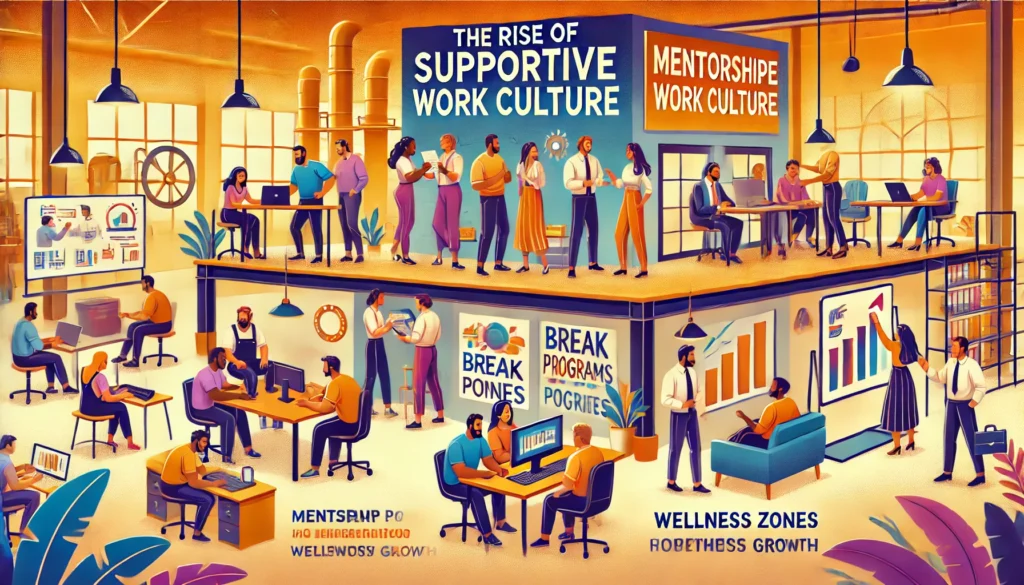Introduction
The blue-collar workforce plays a crucial role in the functioning of various industries, including manufacturing, logistics, retail, construction, and services. Despite their significant contributions, blue-collar employees have traditionally been overlooked in terms of job security, career growth, and workplace benefits. However, with rapid technological advancements, policy shifts, and changing employer perspectives, a new-age ecosystem for blue-collar employees is emerging. This ecosystem focuses on improving their working conditions, enhancing career opportunities, and integrating technology to create a more inclusive and efficient workforce.
The Changing Landscape for Blue-Collar Workers
Historically, blue-collar jobs have been associated with manual labor and limited growth opportunities. However, the dynamics are shifting due to various factors such as:
- Digitization of Work Processes: Industries are increasingly incorporating technology, requiring workers to adapt to new tools and software.
- Skill Development Initiatives: Governments and private organizations are investing in upskilling programs to enhance employability.
- Rise of the Gig Economy: Platforms like UrbanClap, Uber, and Zomato have created new job opportunities, allowing workers more flexibility.
- Improved Workplace Policies: Labor reforms and social security measures are being implemented to provide better protection and benefits for workers.
These changes indicate that blue-collar jobs are evolving beyond traditional roles, offering more opportunities for career advancement and stability.
The Role of Technology in Empowering Blue-Collar Employees
1. Digital Hiring Platforms
Recruitment for blue-collar jobs has traditionally been informal and unstructured. Digital hiring platforms like Apna, QuikrJobs, and WorkIndia have streamlined the hiring process, making it easier for employers to find skilled workers and for workers to secure better job opportunities.
2. E-Learning and Skill Development
Online platforms such as Udemy, National Skill Development Corporation (NSDC), and Coursera offer courses tailored for blue-collar workers. These training programs help them acquire new skills, stay competitive, and enhance career prospects.
3. Workforce Management Solutions
Many companies now use workforce management software to track attendance, productivity, and payroll. This reduces administrative errors and ensures transparency in wage distribution and performance evaluations.
4. Financial Inclusion and Digital Payments
Fintech innovations have enabled easier access to banking services for blue-collar workers. With digital wallets, UPI transactions, and salary advance apps, financial transactions have become more accessible and secure for employees who previously relied on cash payments.

The Rise of a Supportive Work Culture
The new-age ecosystem is not just about technological advancements but also about creating a more supportive work culture. Some notable developments include:
1. Enhanced Job Security
Employers are focusing on providing stable contracts, health benefits, and social security measures to retain skilled workers. Government schemes like the Pradhan Mantri Shram Yogi Maan-Dhan (PMSYM) pension scheme are also helping improve financial security for workers.
2. Health and Wellness Benefits
Many companies now offer health insurance, accident coverage, and mental wellness programs to blue-collar employees, recognizing their role in organizational success.
3. Career Growth Opportunities
Organizations are investing in leadership programs and training initiatives to help blue-collar workers transition into supervisory or managerial roles over time.
4. Workplace Safety and Dignity
Workplace safety regulations are being reinforced, and there is growing awareness about creating a respectful work environment. Companies are implementing strict policies against workplace harassment and discrimination.

The Gig Economy and Its Impact on Blue-Collar Jobs
The gig economy has played a significant role in shaping the new-age ecosystem for blue-collar employees. Platforms like Swiggy, Ola, and Amazon have provided employment to millions, allowing them to work on flexible schedules while earning competitive wages.
Pros of the Gig Economy:
- Flexibility in work hours
- Opportunity to earn higher wages based on effort
- Multiple job opportunities across different platforms
Cons of the Gig Economy:
- Lack of job security and fixed income
- Absence of employee benefits such as insurance and pensions
- Unregulated work hours leading to burnout
Governments and organizations are working towards bridging these gaps by introducing policies that offer social security benefits to gig workers.
Challenges in Building a Sustainable Ecosystem for Blue-Collar Employees
Despite the progress, several challenges remain in establishing a fully inclusive and sustainable ecosystem for blue-collar workers:
- Lack of Awareness: Many workers are unaware of available training programs and financial aid options.
- Limited Access to Digital Resources: Not all workers have access to smartphones or the internet, limiting their ability to benefit from digital platforms.
- Exploitation and Wage Disparities: Some employers still exploit workers by underpaying them or not providing adequate job security.
- Social Stigma: Blue-collar jobs are often undervalued in society, leading to lower self-esteem and motivation among workers.
The Road Ahead: Building a Robust Future for Blue-Collar Employees
To create a truly new-age ecosystem, stakeholders—including the government, private sector, and society—must work together. Key steps include:
- Expanding Skill Development Programs: Making training programs more accessible and industry-relevant can enhance employability.
- Strengthening Labor Laws: Ensuring proper wage structures, job security, and benefits for gig and contract workers.
- Encouraging Entrepreneurship: Providing financial aid and mentoring for workers who wish to start their own businesses.
- Promoting Digital Inclusion: Equipping workers with digital literacy skills to help them leverage online platforms for jobs and financial transactions.
Conclusion
A new-age ecosystem for blue-collar employees is essential for economic growth and social equity. By integrating technology, improving working conditions, and fostering a supportive work culture, we can ensure that blue-collar workers receive the recognition and opportunities they deserve. As industries continue to evolve, investing in the well-being and development of blue-collar employees will be crucial for building a sustainable and prosperous future for all.




